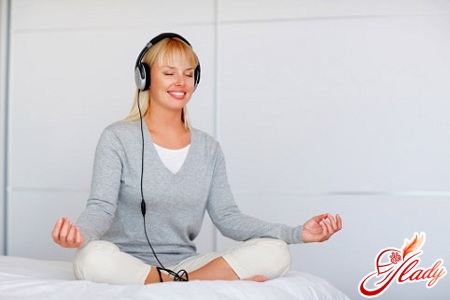 Have you ever had something strange happen to you whenHave you ever been suddenly overcome by a wave of physical symptoms – shortness of breath, muscle spasms, nausea, and all this combined with uncontrollable anxiety, and sometimes with a feeling of complete doom? At the same time, your desperate calls to the ambulance and visits to the therapist do not give any results: all the tests are normal, the body works without deviations. Has this happened to you? It means that you have experienced a panic attack. And if you have encountered such panic attacks more than once, then you should learn more about them in order to develop your own tactics for dealing with them. You should no longer live in fear and uncertainty, so start working on the problem; we will be happy to help you on your way to well-being, to a life without anxiety and panic. We must warn you right away: a visit to a specialist is still necessary for you. Perhaps your panic attacks require medical treatment; if you fight them on your own, you will only aggravate the situation. By undergoing a full medical examination, you will be able to find out for sure that you are dealing with panic attacks and not with some other disease. And to overcome the irrational, but very strong fear of death, which can appear when you experience a panic attack, is possible mostly only with the help of medications. In addition, your doctor will be able to distinguish occasional panic attacks from deeper disorders that may require serious treatment. By undergoing an examination, you will be able to find out whether you have a genetic predisposition to panic attacks and whether your attacks are associated with other diseases, such as thyroid dysfunction or increased sensitivity to lactose. Therefore, do not avoid visiting a medical institution, and take our advice as auxiliary means of working with panic states.
Have you ever had something strange happen to you whenHave you ever been suddenly overcome by a wave of physical symptoms – shortness of breath, muscle spasms, nausea, and all this combined with uncontrollable anxiety, and sometimes with a feeling of complete doom? At the same time, your desperate calls to the ambulance and visits to the therapist do not give any results: all the tests are normal, the body works without deviations. Has this happened to you? It means that you have experienced a panic attack. And if you have encountered such panic attacks more than once, then you should learn more about them in order to develop your own tactics for dealing with them. You should no longer live in fear and uncertainty, so start working on the problem; we will be happy to help you on your way to well-being, to a life without anxiety and panic. We must warn you right away: a visit to a specialist is still necessary for you. Perhaps your panic attacks require medical treatment; if you fight them on your own, you will only aggravate the situation. By undergoing a full medical examination, you will be able to find out for sure that you are dealing with panic attacks and not with some other disease. And to overcome the irrational, but very strong fear of death, which can appear when you experience a panic attack, is possible mostly only with the help of medications. In addition, your doctor will be able to distinguish occasional panic attacks from deeper disorders that may require serious treatment. By undergoing an examination, you will be able to find out whether you have a genetic predisposition to panic attacks and whether your attacks are associated with other diseases, such as thyroid dysfunction or increased sensitivity to lactose. Therefore, do not avoid visiting a medical institution, and take our advice as auxiliary means of working with panic states.
How to recognize the symptoms of a panic attack
Knowing the symptoms of a panic attack will help youbetter control over your condition. It is much easier to fight the enemy if you know him by sight! Once you realize that you are experiencing a panic attack and not a heart attack, severe allergic reaction or other serious condition, you can focus on methods that will help you calm down and overcome the panic attack. Of course, these symptoms differ from person to person, and only a professional can make an accurate diagnosis. However, some of the most common symptoms include:
- Impaired heart rate
- Dizziness
- Shortness of breath, rapid breathing
- Severe nausea
- Trembling and sweating
- Fatigue, weakness
- Chest pain
- Heartburn
- Hot flashes or sudden chills
- Tingling in the extremities
- Fear that you are going crazy
- Fear that you are seriously ill or you can die
These symptoms, as already mentioned, canmanifest themselves in different ways, with different strengths and in different combinations. Understand your body Panic attacks are often a reaction to fear, conscious or unconscious, and the physical reactions you experience are the result of your body's reaction to this fear. You begin to feel anxiety, and completely unfounded. The catalyst for such anxiety can be some unpleasant or tragic event in your past. Your body suddenly begins to react in such a way as if that incident is about to happen again. Even looking at photographs, old correspondence or anything else that can remind you of those events can trigger such a panic reaction. Not only can you repeatedly experience experiences associated with traumatic events, but you can also experience fear that you will lose control over the current situation and will not be able to fight your condition. Your subconscious interprets the situation as potentially dangerous, and the body begins to produce adrenaline to prepare for a crisis - this is how a panic attack is triggered. And while there are indeed countless variations, the body's general response to panic includes the following reactions:
- Your body goes into a state of total combatreadiness. The brain receives a signal about a potential threat and gives the body the command to prepare for a pseudo-emergency situation and fight for survival. For example, the eyes can expand to improve vision and increase the viewing angle, the pulse is accelerated, so that the blood circulates faster through vital organs, breathing is quickened, so that more oxygen enters the bloodstream, and muscles are strained so that you can move as quickly as possible.
- Your thoughts are "stuck" on terrible thoughts. Instead of reacting to somehow solve a problem or get out of a difficult situation (which you would do if you really got into an emergency situation), you again and again ponder the perceived threat and still plunge into fear. The fight against the threat in this case is impossible, because it really does not exist, there is only your fear of its possibility.
- You begin to experience the effects of rapidrespiration. The inhaled oxygen interacts with the cells of your body, resulting in the formation of carbon dioxide, which then exhales. During a panic attack, the respiratory rate increases so that the body can absorb more oxygen, fighting for survival. But during such a breath, when the so-called hyperventilation of the lungs takes place, you breathe out more carbon dioxide than your cells are able to produce, resulting in a significant drop in the level of this gas in the brain and in the blood.
The results of such a reaction (which may includedizziness, nausea and increased heart rate) can cause some people to further increase panic, thereby increasing breathing even more. The brain seems to receive a signal from the body: "I'm fighting, but the danger has not passed!", and in turn sends repeated commands to increase all reactions.
How to deal with panic
When you learn to recognize the symptomsan approaching panic attack, you will need to master the next step, leading to relief. We will teach you techniques that will help you cope with a panic attack. Calm your breathing If you feel an attack approaching, then with the help of simple breathing exercises you will be able to calm down faster and begin to control yourself better. But you should not wait for attacks to improve these methods. Repeat the exercises twice a day for ten minutes - this will not only help you to do everything correctly in a difficult moment, but will also make the attacks themselves less frequent. Try to relax. Place one hand on your chest (in the décolleté area), and place the other hand above the diaphragm (approximately between the stomach and the line of the beginning of the rib cage). Take a slow, deep breath through your nose, counting to five. The hand on the chest should remain motionless, and the hand above the diaphragm should rise - that is, do not inhale with your chest, but as if with your stomach, raising the diaphragm. This, as you know, will provide the deepest breath. When you reach the count of five, exhale slowly through your nose. Focusing on your hands, counting, and breathing slowly and deeply will help you focus and calm down. Continue breathing like this until you feel that the panic attack has passed and you feel better. Relax your muscles Find a comfortable position so that you can sit or, even better, lie down. Close your eyes and turn all your attention to your fingers. Bend them and, counting to five, squeeze them as hard as you can; after the count of five, unclench them and relax. Next, focus on your legs. Tense and squeeze your toes, counting to five, then relax. Continue working with your body, highlighting more and more muscle groups: calves, thighs, buttocks, stomach, chest, shoulders, neck - the whole "path" from the legs to the face. By the time you contract and relax the muscles of the face, you will already feel completely calm.
Physical exercise is the best assistant in the fight against panic.
A panic attack can make you feelsevere fatigue; but often healthy fatigue, on the contrary, helps prevent a panic attack. Instead of spending your free time on the couch, try planning the following activities for yourself:
- Walking. During a panic attack, you may feel that nobody and nothing can help you. But sometimes such a simple thing, like a leisurely walk along the quiet avenues of the park, is able to extinguish the waves that were rolling in the waves. Staying in the open air can distract from anxiety, thereby becoming the best cure for your problem. And if you are still actively moving, then aerobic exercises, coupled with sunlight will help the body produce endorphins. So, fresh air and sunlight are quite capable of positively influencing your worldview!
- Yoga and stretching. Deep breathing and stretching exercises will reduce muscle tension and help you restore balance. Here's the simplest exercise: lie on your back and bring one knee to your chest. Press it with your hands to your chest, while still breathing deeply through your nose. Hold on for twenty minutes, then repeat the exercise, pulling the other knee to the chest.
And here's another one:Place your feet shoulder-width apart, straightening your knees. Bend forward, touching the floor with your hands. Hold the pose for ten seconds, then slowly return to a vertical position (do not strain your back while doing the exercise). Repeat this exercise several times.
- Use of peripheral vision. Try to focus your attention on what you can see, what is called, the corner of your eye. Breathe deeply, while relaxing the muscles of the jaw. Such an exercise activates the parasympathetic nervous system, which leads to relaxation of your body.

Learn to resist your fear
The better you understand your fear, theyou will be able to manage it more successfully. Try keeping a diary of observations, where you write down your feelings before, during and after panic attacks; write down your thoughts about what worries and concerns you. When you feel better, reread these entries. This will help you prepare for the next attack (since you will already know what to expect), and also help you understand that even the most severe attack eventually ends well. There are other ways to better understand the nature of your fear and help yourself:
- Paradoxical intention. The purpose of this exercise is to deliberately induce a panic attack and pre-planned actions to stop it. Thus, you will form a feeling that you are in control of what scares you. This will help you train yourself not to be afraid of such situations.
- Join the support group. Your therapist can recommend you a group for those suffering from panic attacks. Classes in such groups can help to get to the root of your problem and get a deeper understanding of the situation in which you are. In addition, you will have a great opportunity to learn how others cope with their problems.
The more you do something, the better.cope with panic, the less fear you will experience with each subsequent attack. You will feel wiser and freer, having taken a big step towards new opportunities for yourself! We recommend reading:









